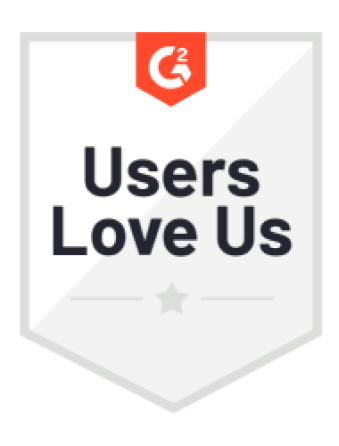Why Most Data Catalogs Fail—And How to Get Yours Right
The 4-Phase Blueprint for Your Data Catalog Success
%202.png)
Introduction
Why do some data catalogs transform companies while others sit unused? To answer this question, I spoke with someone who's seen it all.
Meet Ovidiu Bodnar, Customer Success Director at CastorDoc. He's helped over 150 companies set up their data catalogs, from global enterprises to fast-growing startups. After seeing both successes and costly failures, he knows exactly what separates the winners from the losers.
Our conversation revealed four critical phases every company must get right. Here's what you need to know to avoid common mistakes and get your teams actually using your data catalog.

Phase 1: Initial Planning and Strategic Vision
Many data catalog projects fail before they even begin due to poor planning. Organizations often rush to buy a tool, thinking technology alone will solve their data problems. In reality, a catalog needs to be part of a larger data strategy, with clear goals and strong support from leadership.
The Technology Trap
"You can't just throw a catalog into an organization and expect magic to happen. Without strong leadership support and clear goals, the tool will sit unused" - Ovidiu Bodnar, Customer Success Director at CastorDoc
Here's the problem: teams often think that buying a new tool will magically solve their data challenges. They've had success with simpler tools before - like when they rolled out Slack or Dropbox - so they figure this will be the same. But data catalogs are trickier. A data catalog changes how your entire company works with data. It's not just about giving people a new tool - it's about changing habits and ways of working that have been around for years. That's a much bigger change than most teams expect.
To make it work, you need more than just good software. You need executive sponsorship, clear guidelines for everyone to follow, and a plan that matches what your company is trying to achieve.
Executive Sponsorship and Business Value
"A catalog should help people make better decisions, not just be a fancy filing system. If your business teams don't see how it helps them do their jobs better, they won't use it." - Ovidiu Bodnar, Customer Success Director at CastorDoc
Different teams need distinct value propositions from a data catalog. Technical teams focus on transformation logic and data flow impacts. Business teams prioritize metric definitions, dashboard clarity, and KPI alignment. Meanwhile, governance teams concentrate on maintaining proper data ownership and compliance standards. Success comes from recognizing these varied needs. When done right, data teams see fewer redundant queries, business users gain independence, and governance teams maintain better control. But achieving these outcomes requires executive sponsorship and understanding how each persona benefits from the catalog.
How to Lay a Strong Foundation
- Get leadership support and tie catalog goals to business strategy
- Create a map of key stakeholders from both business and technical teams
- Define clear success metrics that show business value
- Build a plan for helping teams adopt the new tool
- Focus on helping people understand and use data better

Phase 2: Implementation Challenges
This phase is where plans meet reality, and common mistakes can derail even the best-prepared projects. Many teams focus too much on technical features and not enough on making the catalog useful and easy to use.
The Infrastructure Blind Spot
"Don't waste time cataloging data nobody uses. Start with what's important to your business." - Ovidiu Bodnar, Customer Success Director at CastorDoc
Many teams jump into setting up their data catalog too quickly. They start documenting everything they can find without asking a simple question: "What data do our people actually need?" The result? They waste time organizing data nobody uses, while missing the important stuff that people need every day. Instead of making it easier to find data, they end up creating a digital warehouse full of clutter that just makes everyone's job harder.
Focus on Impact, Not Volume
"Start small, prove value, then grow. Trying to do everything at once almost always fails." - Ovidiu Bodnar, Customer Success Director at CastorDoc
Another common mistake? Treating documentation like a mechanical task - dumping all available metadata and technical details without considering what people actually need. If we don't focus on the real pain points (those datasets generating endless questions, heavily used assets, and business-critical metrics), we risk wasting effort on irrelevant data and demotivating contributors who'll see cataloging as just another burden.
When you focus on these high-impact areas, you get two big wins: you can quickly show real value (which keeps the executives happy), and your team stays motivated because they can actually see their work making a difference. Without this targeted approach, contributors see cataloging as just another burden, and your valuable documentation efforts go to waste. Think about it - if you're asking people to spend time documenting data, they need to see it's worth their effort.
The secret to success? Start where it hurts the most, prove it works, then expand from there.
How to Build the Right Implementation Framework
- Map your important data assets first
- Start with one business area or use case
- Build a team with both technical and business expertise
- Set clear milestones for progress
- Focus on making data easy to find and use

Phase 3: Adoption and Organizational Impact
With a solid plan in place, the next challenge is ensuring that teams actually use the catalog. Adoption is the key to success, and if teams don’t see value, they won’t engage with the tool.
Connecting Data to Domains
"Think domain-first, automation second. Your catalog needs to speak the language of your business teams." - Ovidiu Bodnar, Customer Success Director at CastorDoc
Here's an important lesson: automation alone isn't your silver bullet. What matters most is connecting data to where and how it's actually used. . Properly linking your data assets, KPIs, and glossary terms to their specific domains makes a real difference. Sure, you can have every piece of data perfectly tracked, but if teams don't know which numbers belong to their domain or how they fit into their data products, you're still stuck.
The fix isn't complicated: it's about making these connections clear. When sales teams can easily find their metrics and finance knows which data feeds their forecasts - that's when your catalog becomes useful.
The Adoption Challenge
"If people don't know why they should use the catalog, they won't." - Ovidiu Bodnar, Customer Success Director at CastorDoc
The best data catalog is worthless if teams won't use it. You'll spot this problem quickly: despite having a catalog, Slack channels still fill with basic questions like "Where's the customer data?” This means your teams don't trust or understand your new tool yet.
Getting people to actually use your catalog takes more than just telling them it exists. Your leaders need to set the example. When they use the catalog themselves and point others to it, teams start to follow. Soon, instead of typing questions in Slack, people start finding answers themselves.
How to Drive Sustainable Adoption
- Make the catalog part of everyday work processes
- Provide training and support through various channels
- Measure real improvements in how teams work
- Show how the catalog helps solve business problems
- Keep promoting the benefits through success stories

Phase 4: Long-term Success
Once adoption is in place, organizations must ensure their catalog remains relevant over time. A data catalog isn’t a static tool—it must evolve alongside your organization’s data needs.
Keeping Content Fresh
"A catalog needs to grow with your business. If it stays static, people will stop trusting it." - Ovidiu Bodnar, Customer Success Director at CastorDoc
Many organizations treat their catalog like a finished project rather than a living tool that needs regular updates. As businesses evolve, new data sources appear and needs change. Without regular updates, the catalog becomes outdated and eventually unused.
A retail company avoided this by creating a rotating team of business and data stewards who met quarterly to review and update the catalog. Their regular "data days" helped keep the tool relevant and valuable across the organization.
Shared Responsibility
"When business teams help maintain the catalog, they trust it more. Everyone needs to play a part." - Ovidiu Bodnar, Customer Success Director at CastorDoc
The best catalogs combine central oversight with distributed responsibility. Technical teams can't maintain the catalog alone—business users need to help keep content relevant and accurate.
How to Ensure Long-Term Success
- Create clear processes for updating the catalog
- Share responsibility between technical and business teams
- Review and refresh content regularly
- Listen to user feedback and make improvements
- Plan for future challenges like AI-generated data
Looking Ahead
"A data catalog isn't just another piece of software—it's a crucial part of how your organization uses data." - Ovidiu Bodnar, Customer Success Director at CastorDoc
So what's the key to success? Balance. You need a data catalog that's both technically solid and actually helpful for everyday work. When you avoid the pitfalls we've talked about and focus on real business value, something interesting happens: your catalog becomes a tool people can't work without.
Sure, the future will bring new challenges. We're already seeing this with AI creating more data than ever, and data systems getting more complex by the day. But the basics don't change: solve real problems, keep things simple, and grow your catalog alongside your company.
The good news? You don't have to figure this out alone. By learning from companies that have been there before, and paying attention to both your tech needs and your people's needs, you can build a data catalog that actually helps your teams work better with data.
You might also like
Get in Touch to Learn More



“[I like] The easy to use interface and the speed of finding the relevant assets that you're looking for in your database. I also really enjoy the score given to each table, [which] lets you prioritize the results of your queries by how often certain data is used.” - Michal P., Head of Data




.png)
%202.png)


.png)

.png)
